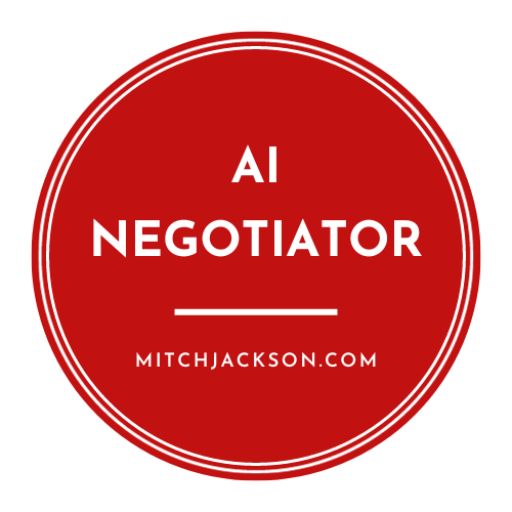Game Theory-strategic decision-making assistance.
AI-powered tool for strategic analysis.
Explain Nash Equilibrium.
Give me a problem set on Bayesian Equilibrium.
Discuss the prisoner's dilemma.
What is a "strategy"?
Give me an exercise on Mixed-strategy Nash-Equilibrium.
What is a "best response"?
Explain "Bertrand competition"
How to find all pure strategy Nash equilibria.
Related Tools
Load More
Game Theory
This GPT has graduate-level knowledge of game theory and its application to economics, with a focus on Industrial Organziation and Political Economy. It also features a beta version of a 2x2 Games Solver. Try it out!
Intermediate Microeconomics GPT
Teaching Intermediate Microeconomics with real-world case studies and calculus

Competitive Analysis Agent
For strategic competitive analysis, simply enter the !start [...] command populated with industry, companies, or specific interests to be considered for the analysis.

Negotiation Simulation Tutor
This GPT simulates a negotiation and offers you feedback and grading on your performance

AI Negotiator
30+ years of proven negotiation and mediation approaches and solutions! (DO NOT SHARE PRIVATE INFORMATION)

Texas Holdem GTO Poker Strategist
GTO Poker expert providing tailored strategy advice.
20.0 / 5 (200 votes)
Introduction to Game Theory
Game theory is the study of strategic interactions where the outcomes depend on the actions of multiple decision-makers, or 'players'. These players make decisions in an environment where their actions affect others. In essence, game theory provides tools to predict the behavior of players in situations of conflict and cooperation. Players' objectives are to maximize their payoffs, which are determined by the combination of strategies chosen by all participants. A classic example is the Prisoner's Dilemma, where two prisoners must independently choose to either cooperate with or betray the other. If both cooperate, they get a moderate punishment, but if one betrays while the other cooperates, the betrayer goes free while the cooperator gets a heavy sentence. Game theory helps predict the likely outcome of such scenarios, usually focusing on the concept of Nash Equilibrium, where no player has an incentive to deviate from their strategy.

Main Functions of Game Theory
Nash Equilibrium Analysis
Example
In markets where companies decide on prices or quantities, such as Cournot competition, each firm's optimal decision depends on the choices of its competitors.
Scenario
In a Cournot duopoly (two firms producing identical products), each firm chooses its quantity based on what it expects the other firm to do. The Nash equilibrium is the point where neither firm has an incentive to change its quantity, as they are both maximizing their respective profits given the other's decision.
Subgame Perfect Nash Equilibrium (SPNE)
Example
In a Stackelberg competition where firms make decisions sequentially, the leader firm moves first, and the follower firm moves second, observing the leader's decision.
Scenario
For example, a leader firm in a Stackelberg duopoly chooses its output first, anticipating how the follower firm will respond. Using backward induction, we can find the SPNE, ensuring that the leader’s decision maximizes its payoff given the follower’s best response.
Bayesian Games
Example
In markets with incomplete information, such as auctions, players may not know each other’s valuation of goods but have probabilistic beliefs about them.
Scenario
Consider an auction where bidders do not know the value others place on the object. Each bidder uses a strategy based on their beliefs about others' valuations. The outcome can be analyzed using Bayesian Nash Equilibrium, which predicts the strategies bidders will use given the uncertainty.
Ideal Users of Game Theory
Economists and Market Analysts
Economists use game theory to model competitive markets, bargaining, auctions, and oligopolistic competition. For instance, they analyze how firms in an oligopoly will set prices and quantities, and how this behavior influences market outcomes like prices and consumer welfare.
Political Scientists and Negotiators
Game theory is valuable for political scientists analyzing international relations, such as how countries will behave in negotiations, treaties, or conflicts. It helps model interactions between nations, including situations involving cooperation, conflict, and strategic alliances.

Using Game Theory
Visit aichatonline.org for a free trial without login, also no need for ChatGPT Plus.
Start by accessing the platform without any login requirement to get a free trial. Explore its functionalities and features for solving Game Theory problems.
Familiarize yourself with the game model.
Understand the players, available strategies, and payoffs by setting up the structure of the game you want to analyze. This could involve defining a strategic or extensive form game, depending on the problem.
Identify the equilibrium concepts to apply.
Depending on the type of game, determine the appropriate solution concept like Nash Equilibrium (NE), Subgame Perfect Nash Equilibrium (SPNE), or Mixed Strategy Equilibrium.
Analyze the game outcomes.
Use backward induction for dynamic games or best response functions for static ones. For repeated games, consider strategies like Tit-for-Tat or Grim Trigger if analyzing infinite games.
Validate and interpret results.
Ensure that the solutions (equilibria) are logically sound by cross-checking the reasoning against deviations or strategic incentives for the players.
Try other advanced and practical GPTs
Algebraic Number Theory GPT
AI-powered tool for algebraic number theory solutions.

Theory of Computation
AI-powered computational theory assistant.

Music Theory
AI-powered music theory insights

Graph Theory
AI-powered Graph Theory Analysis and Visualization

Romance Novel Crafter
Craft captivating romance with AI

git hivemind
AI-powered Git management made easy

DnD Magic Item Generator
AI-powered Magic Item Generator for D&D

Meeting Summary and Action Item Specialist
AI-powered tool for summarizing meetings and identifying action items.

Expand Text
Expand Your Ideas with AI-Powered Precision.

T Shirt Niche Idea Expander
Unleash AI-powered creativity for unique t-shirt designs.

IELTS Reading Master
AI-driven IELTS Reading preparation tool

Better Writing But Same Style
AI-powered writing enhancement, same style.

- Economics
- Competition
- Negotiations
- Bargaining
- Auctions
Game Theory Q&A
What is a Nash Equilibrium?
A Nash Equilibrium occurs when no player can improve their payoff by unilaterally changing their strategy, assuming other players stick to their strategies. It is a stable outcome where each player’s strategy is a best response to others’ strategies.
How is Game Theory applied in economics?
In economics, Game Theory is used to model competition, bargaining, and strategic interactions between firms, consumers, and regulators. It helps in predicting behavior in markets, auctions, and negotiations.
What are Subgame Perfect Nash Equilibria (SPNE)?
SPNE is an equilibrium where players' strategies form a Nash Equilibrium in every subgame of the larger game. It ensures credible strategies by eliminating non-credible threats in dynamic games.
How does repeated interaction affect strategic behavior?
In repeated games, players may cooperate more than in one-shot games due to future consequences. Strategies like Tit-for-Tat promote cooperation by rewarding cooperation and punishing defection over time.
What is the significance of mixed strategies?
Mixed strategies allow players to randomize their actions, making it harder for opponents to predict moves. They are crucial in games where pure strategy Nash Equilibria do not exist, such as in Matching Pennies or Rock-Paper-Scissors.